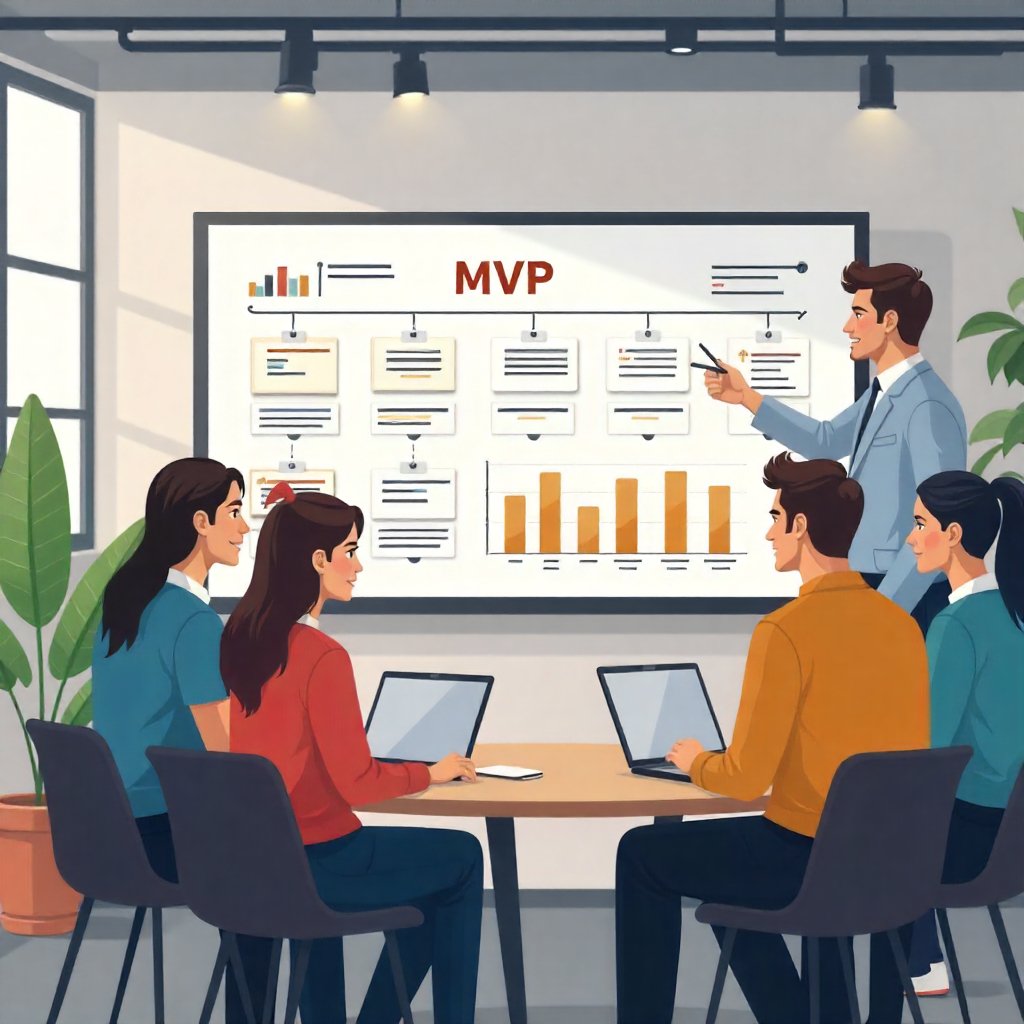Introduction
Every successful startup begins with a great idea—but turning that idea into a working product is often the hardest part. That’s where the Minimum Viable Product (MVP) comes in.
An MVP is the simplest version of your product that includes only the most essential features. It helps startups test their ideas, attract early users, and gather valuable feedback without spending excessive time and resources.
In this article, we’ll break down what an MVP is, why it’s crucial for startups, the step-by-step process of building one, common challenges you may face, and best practices recommended by the best software development company in India.
Understanding the Concept of MVP
Purpose of an MVP
The primary goal of an MVP is not to launch a fully polished product but to validate your business idea with real users. It allows startups to:
- Validate business ideas: Determine if there’s genuine demand for your product.
- Gather user feedback: Learn what works, what doesn’t, and what needs improvement.
- Minimize costs and risks: Save money and avoid years of development on a product no one wants.
Characteristics of a Successful MVP
Not all MVPs are effective. The best MVPs share these characteristics:
- Core functionality only: Include just the features necessary to solve the primary problem.
- User-centric design: Simple, intuitive, and easy for users to adopt.
- Ability to iterate: Designed with flexibility in mind so new features can be added as feedback rolls in.
Steps to Build a Successful MVP
Step 1: Idea Validation
Before writing a single line of code, validate your idea.
- Identify your target audience: Who are your ideal users? What pain points are you solving?
- Conduct market research: Explore existing solutions, industry reports, and customer behavior.
- Competitive analysis: Understand your competitors’ strengths and weaknesses to find opportunities.
Step 2: Defining Core Features
Once your idea is validated, define what your MVP should include.
- List essential functionalities: Focus on the problem-solving core.
- Prioritize features with the MoSCoW method:
- Must have: Essential features your MVP cannot exist without.
- Should have: Important, but not critical.
- Could have: Nice-to-have features for later iterations.
- Won’t have: Features you deliberately exclude from the MVP.
Step 3: Prototyping and Design
Before coding, visualize your product.
- Importance of wireframes: They provide a blueprint for your MVP, saving time in the long run.
- Prototyping tools: Tools like Figma, Sketch, or InVision make it easy to create clickable mockups that stakeholders and test users can review.
Step 4: Development Process
Now comes the actual building phase.
- Choosing the right technology stack:
- Frontend options: React, Vue.js, Angular.
- Backend options: Node.js, Ruby on Rails, Django.
- Agile methodology:
- Break development into sprints.
- Deliver small, functional increments of the product.
- Get feedback and iterate quickly.
Step 5: Testing and Quality Assurance
Testing ensures your MVP doesn’t fail the moment users try it.
- Types of testing:
- Unit testing (individual components).
- Integration testing (how components work together).
- User acceptance testing (real users verifying usability).
- User feedback: Conduct beta tests with a limited audience to gain insights before full launch.
Step 6: Launching the MVP
Once tested, it’s time to launch.
- Go-to-market strategy: Define your target channels and messaging.
- Promotion channels: Leverage social media, press releases, startup directories, and email campaigns to attract early adopters.
Collecting and Analyzing Feedback
The MVP journey doesn’t end with the launch. Feedback is the lifeblood of improvement.
- Methods for gathering feedback:
- Surveys and interviews with early adopters.
- Analytics tools like Google Analytics, Mixpanel, or Hotjar.
- Importance of user feedback: It helps you make data-driven decisions on what to improve, add, or remove in future versions.
Common Challenges in MVP Development
Even with the right plan, startups face challenges:
- Scope creep: Adding too many features defeats the purpose of an MVP.
- Balancing quality and speed: A rushed MVP may fail, but overengineering delays launch.
- Resource constraints: Limited budgets and small teams can slow down development.
The best software development company in India often advises startups to focus on lean development practices, ensuring they deliver high value without draining resources.
Best Practices for Building an MVP
To maximize your MVP’s success, follow these proven best practices:
- Focus on user experience: Even a minimal product must be simple and enjoyable to use.
- Stay adaptable: Be ready to pivot based on real-world feedback.
- Define success metrics: Track KPIs like user retention, engagement rates, and customer satisfaction.
Conclusion
Building an MVP is not about launching a “half-baked” product. It’s about creating a functional, user-focused version of your idea that helps you test assumptions, gather insights, and improve through iteration.
For startups, this approach saves money, reduces risks, and accelerates time-to-market. Partnering with experts, like the best software development company in India, ensures that your MVP is built with the right strategy, technology, and user focus.
Embrace the MVP process, stay flexible, and remember that success comes from continuous learning and iteration. Your startup’s big breakthrough may start with a simple MVP that actually works.
